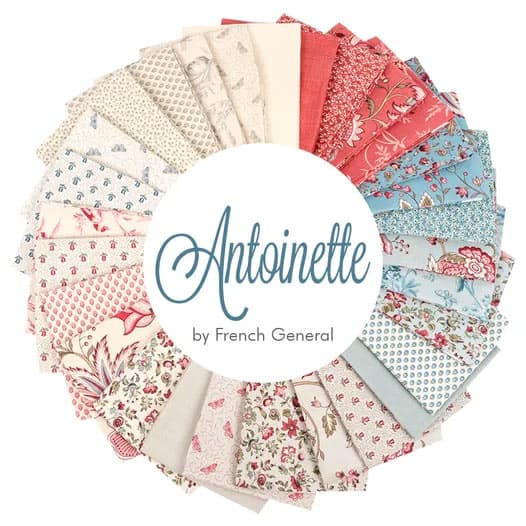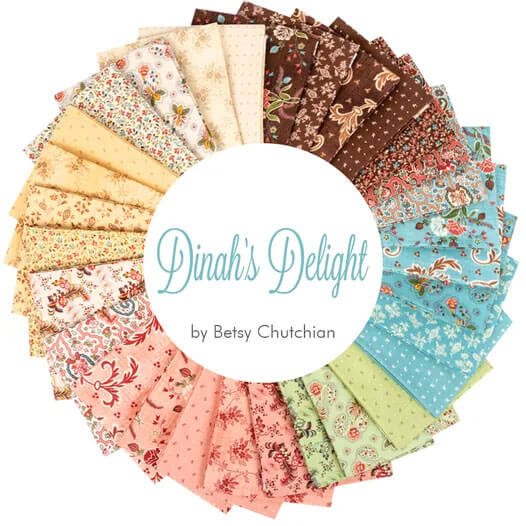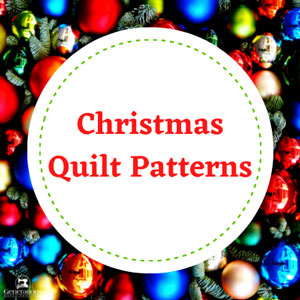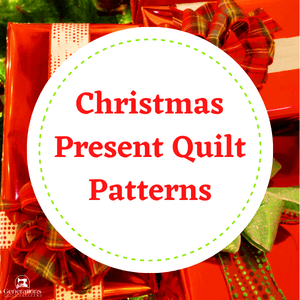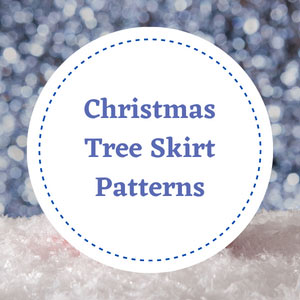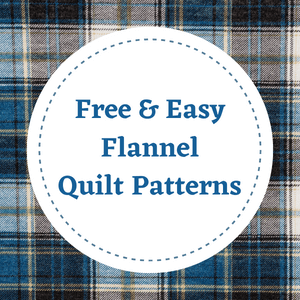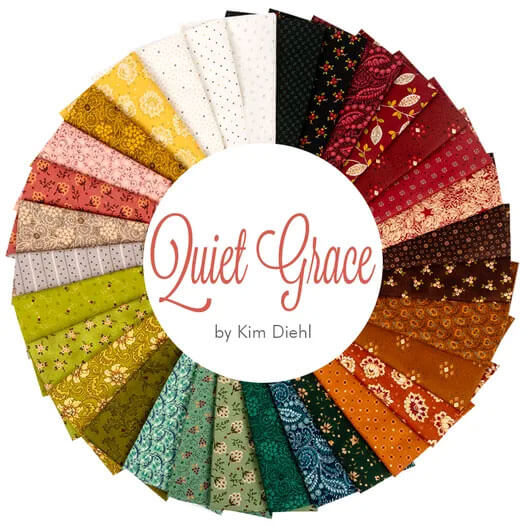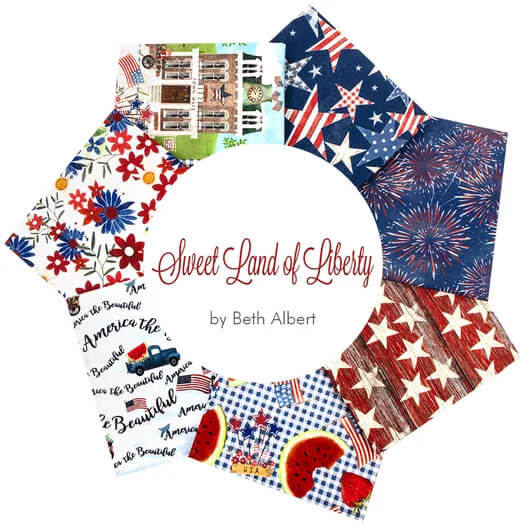- Home
- Free Quilt Block Patterns
- Capital T Quilt Block
Capital T Quilt Block Pattern
From our Free Quilt Block Patterns Library
This post contains affiliate links, for which I receive compensation.
Skill Level: Confident Beginner
The Capital T quilt block is a combination of Flying Geese and Half Square Triangle units (HST) which can be either paper pieced or stitched from rotary cut patches.
In this tutorial, a combination of both is used to create precise blocks.
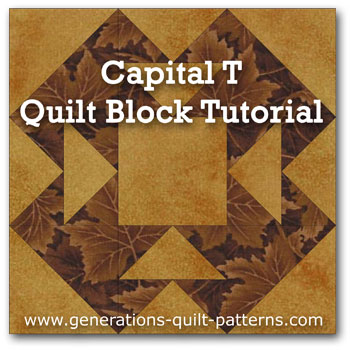
There are cutting instructions for 4 sizes.
Links to alternate methods are included, too.
Let's get started!
📋 General Instructions
Please read all instructions before cutting and stitching.
All seam allowances (SA) are a 1/4" unless otherwise indicated.
When instructed to 'press', first press the pieced unit flat to set the seam. Then open the patch, pressing from the front.
Check out our 'secret' technique to getting the flattest quilt blocks you'll ever make. It works even with the paper attached. And it couldn't be EASIER!
There are several methods for constructing Flying Geese units. (You can click here to learn about them.)
But when I'm making stacked Flying Geese—that is one sewn to the next to next one—I prefer paper piecing. There's less chance of the points being cut off.
However, if you prefer traditional piecing, you may like this No-Waste—4 at a time method. (Don't forget to scroll down to the 'Stamp Out Math' logo for a downloadable cutting chart for that method.)
The newest quilt fabrics to tickle your fancy...
Click the images below to see the full collection. We share any commercial and/or free patterns that showcase them, too. (For inspiration, of course!)
Step 1: Download the patterns
You'll need the most current version of Adobe installed on your computer to download the pattern.
On the Adobe Print Menu page, under 'Page Size and Handling' set 'Custom Scale' to 100% before printing for accurate results. Click here to see what it looks like on the Print Menu page.
After printing, use the 1" square graphic on the printed pages to confirm they are printed accurately.
Choose your finished block size from the list below and print the needed Flying Geese pattern.
Print Flying Geese Pair Pattern | ||
|---|---|---|
| Finished Block Size | # of copies | Link to PDF Download |
| 4-1/2" | 1 | 1-1/2" |
| 6" | 1 | 2" |
| 7-1/2" | 1 | 2-1/2" |
| 9" | 1 | 3" |
After printing, measure the 1" square to confirm the pattern is printed at the correct size.

Not sure which paper to use?
Take a look at my review of several of the most popular brands available to us quilters on the market.
You want a super-easy paper to tear away—less stress on the stitches.
Step 2: Cut patches for a Capital T
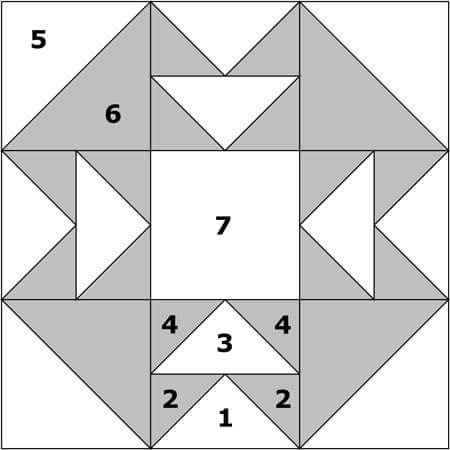
Sample Size: 9" finished / 9½" unfinished
Grid: 3x3
Attribution: Household Magazine
Design Type: Even 9-patch
The dimensions for the paper piecing patches are generously sized to make positioning them quick and easy.
I also prefer oversized patches for HSTs.
For this 9" block example, instead of cutting squares 3-7/8" as shown in the chart, I actually cut them 4-1/4"—3/8" larger—and then trimmed after stitching.
The choice is yours. All the patches used for HSTs are marked with '**'.
And finally, all the shapes in the chart below are squares, i.e. 3-1/8" means cut a 3-1/8" x 3-1/8" square.
 |
Cutting Chart for a~ Traditional & Paper Piecing ~ | ||||||
|---|---|---|---|---|---|---|---|
| Patch | Fabric | Qty | Finished Block Size | Sub Cut | |||
| 4-1/2” | 6” | 7-1/2” | 9” | ||||
| 1, 3 | A | 2 | 3-1/8” | 3-5/8” | 4-1/8” | 4-5/8” | |
| 2, 4 | B | 8 | 2-1/8” | 2-3/8” | 2-5/8” | 2-7/8” | |
| 5** | A | 2 | 2-3/8”** | 2/7/8”** | 3-3/8”** | 3-7/8”** | na |
| 6** | B | 2 | 2-3/8”** | 2-7/8”** | 3-3/8”** | 3-7/8”** | na |
| 7 | A | 1 | 2” | 2-1/2” | 3” | 3-1/2” | na |
| Grid Size | 1-1/2” | 2” | 2-1/2” | 3” | na | ||
Below are the cut patches.
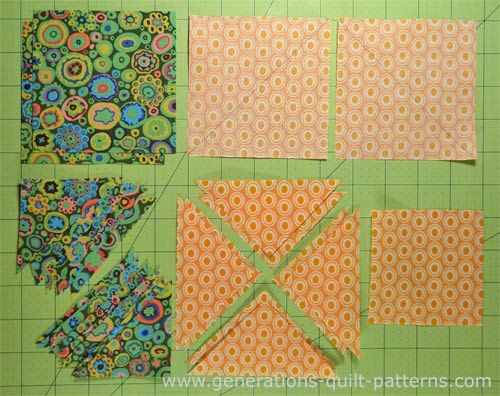
Notice the large orange squares (upper right) are flipped to the wrong side and marked from corner to corner diagonally in preparation for making half square triangles.
Step 3: Make the units
Flying Geese Pairs Units
Make 4
Cut the four 'pair' patterns from the page you downloaded. Just cut outside the dotted line that marks the unfinished edge of each block. You will trim to size in the last step.
Use a dab of Elmer's Glue Stick—goes on purple, dries clear—to position Patch #1 with its backside to the unprinted side of your pattern (below).
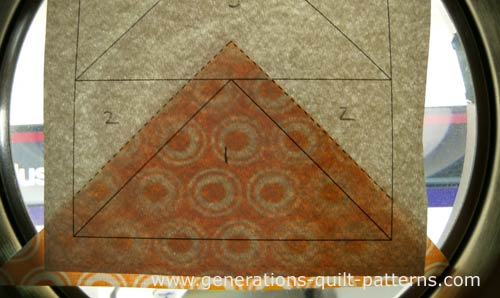
With RST, position a #2 triangle with its long bias edge aligned with one short side of #1.
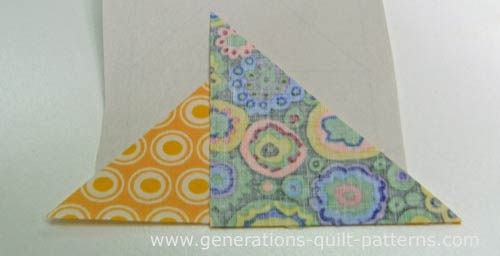
Stitch from the printed side on the solid line, starting and ending a quarter inch from the beginning and end of it.
Press. These fabrics were starched before they were cut, so I'm able to fingerpress these shorter seams with no tucks.
Add the second #2 triangle to the other side in the same manner. Press.
To trim and establish the next placement line, match the ruler's edge with the solid stitching line (see red arrow below).
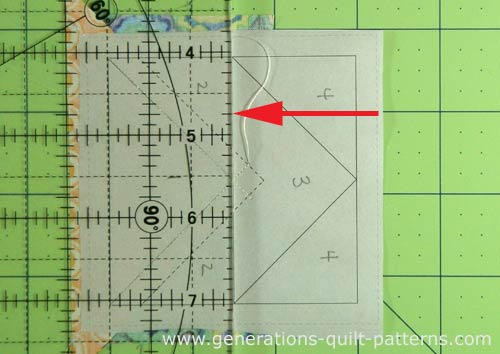
Crease the paper at this line and fold it back on itself.
Lay the 1/4" mark on the folded edge (see arrow below) and trim to create the placement line.
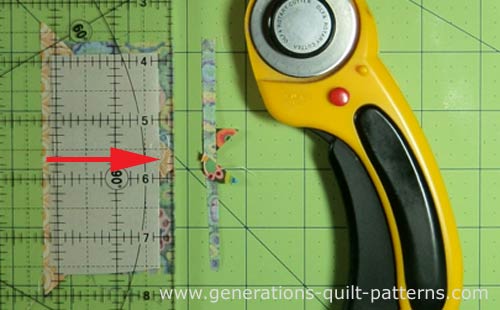
With RST, match the long edge of the #3 triangle with the cut edge and stitch.
Press.
Add the remaining #4 patches. Either create the placement lines as described just above, or eyeball their positioning. Trim SAs to 1/4" if needed.
Trim the stitched unit to size (3-1/2" for our example) by aligning the 1/4" line of the ruler with the solid line and trimming. Repeat for all 4 sides for all 4 units.
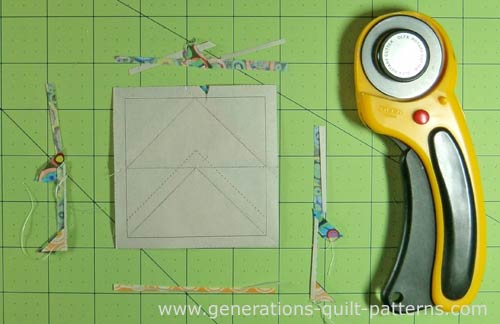
Half Square Triangle Units (HST)
Make 4
Install your 1/4" foot. Return your stitch length to 10-12 stitches per inch.
Draw a diagonal line from corner to corner on the back of the two light #5 squares.
With RST with a #6 square, stitch a 1/4" away from both sides of the drawn lines. (The arrow points to my anchor cloth.)
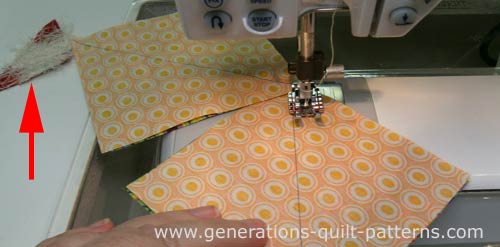
Cut the stitched squares in half along the drawn line and press the SA towards the dark.
Trim these Half Square Triangles to the same cut size as Patch #7. For our 9" finished block that's 3½" x 3½".
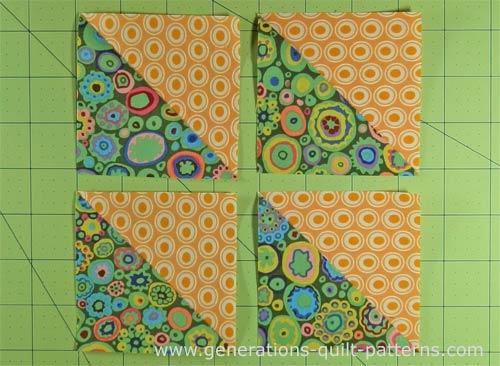
For more detailed instructions and pictures for this technique, visit Quick Pieced HSTs.
Step 4: Assemble your Capital T quilt block
Lay out the sewn units and cut square into rows.
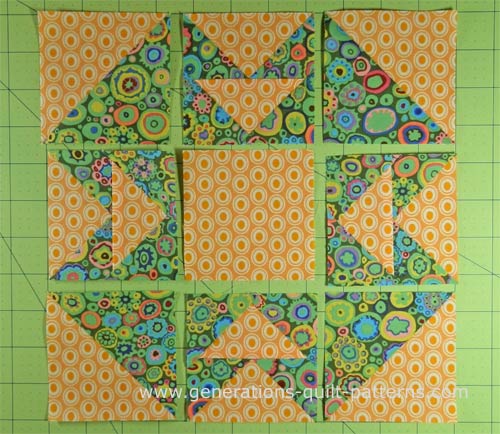
Stitch the units into rows. Press all the SAs away from the Flying Geese units.
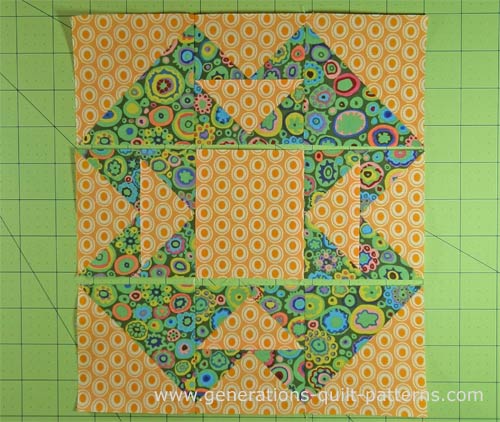
The finished Capital T quilt block looks like this...
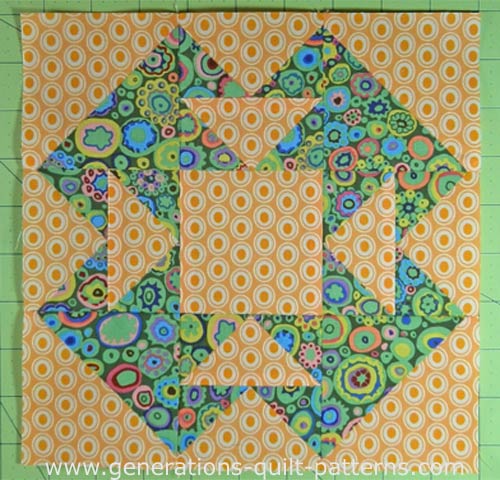 Our Capital T is done!
Our Capital T is done!Variations on a Capital T
Several others borrow the name 'Capital T quilt block'. They use this same basic structure with minor variations.
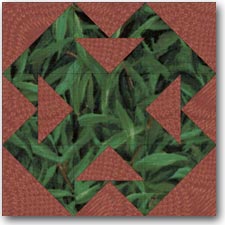
The only difference from the original Capital T quilt block is the center is now a dark instead of a light fabric.
AKA: Double T
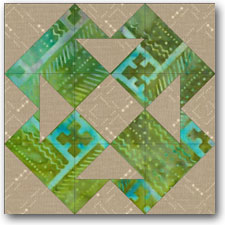
A square in a square is substituted into the center.
AKA: Imperial T, Big T and Tea for Four
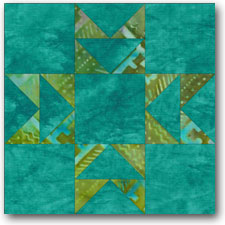
Here the corner HSTs are replaced with solid squares.
Click here for instructions to make this block.
AKA: Double T and Cut the Corners
Now that you've made the blocks...
What do you do with them?
Check out our Quilt Design 101 for layout inspiration.
What about a different quilt block?
For a list of all the 220+ quilt block patterns on this site, start here.
If you know the name of the block, shorten your search by using these links:
Click here if you're looking for blocks with at least some paper piecing.
Click here if you're looking for the basic building blocks of quilting, i.e., Flying Geese, half square triangles, quarter square triangles, etc., along with several techniques to make each.
And finally, use these links to find blocks in these finished sizes:

